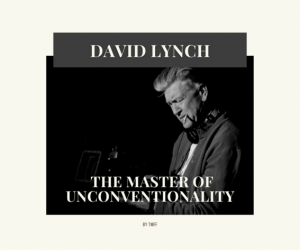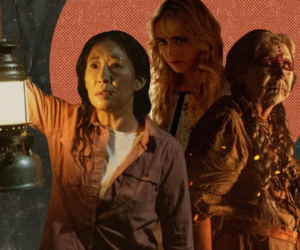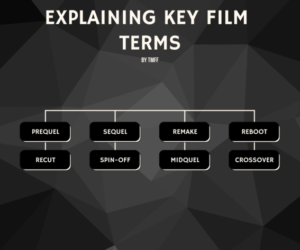Making a drama film is always a gamble: what if it’s not dramatic enough, or overly-dramatic to the point of hilarity? Then maybe a comedy? Some people completely lack a sense of humour, while others’ might be too refined to appreciate childish humour, too simplistic to see through subtle jokes, or too politically correct to laugh at sensitive topics. Alright, then surely action films will do good. There’s a higher chance of success, but that’s not always the case – some viewers (me included) are simply not impressed by the superhero overload mishmashes of recent years, or by Michael Bay ‘three explosions per minute’ flicks. So we might not all be moved by drama, or comedy, or action-packed chase scenes, but we’re all moved by fear.
The feeling of horror
There have been many scientific studies undertaken over the years, and much research published in academic journals about people’s attraction for the horror genre. The results have not always been clear-cut: while certain correlations have been identified (such as the fact that horror film fans are also more likely to practise extreme sports or hop on the scariest roller coaster at a fair), they have not always proved to be significant, and have sometimes failed to be replicated in other studies. However, a few basic assumptions, grounded in human psychology, have been proposed by researchers.
One explanation is the opportunity that horror films offer of experiencing fears in the safety of your own home or a cinema room, and making fun of the unreal. This sudden release of emotion can be seen in theatres during a jump scare moment: some people will be startled, but then will immediately resort to laughter as a means of negating this sudden scary feeling. I will argue that if an audience member laughs moments after they’re supposed to be scared, they’re either not experiencing the film as they should, or the film is not doing the right thing to scare them (and jump scares are cheap and unnecessary – there, I’ve said it). But that’s beside the point.
Audiences can enjoy these moments of horror or a set of quick scares because they know full well that the events are unreal and nothing has been done to harm anyone during the filming process. Watching images of a live animal being butchered or of a kid bullied on a playground will evoke a different type of response, one that does not subsequently elicit any sort of enjoyment. And therein lies the difference between real and imagined horror.
One final factor is a feeling of catharsis that one might get from certain types of horror: mostly slasher flicks, or productions where a lot of zombies and monsters are killed – Resident Evil and The Walking Dead are good examples. People watch these violent gorefests to purge negative emotions that they might possess and keep actual aggressive behaviour in check. It’s similar to the act of playing violent videogames, which research has shown decreases real-life violent tendencies.
Undeniable financial success
An overwhelming majority of horror films end up being huge financial successes, simply because there’s a constant supply of eager moviegoers waiting for the next fright. They tend to appeal to the lowest common denominator (unless we’re talking about refined horror films such as The Witch), they’re easy to market, and they generally attract bigger crowds. While a nice family drama can be enjoyed in the company of mum and dad, and a romance might be best watched in the company of your significant other, horror flicks generally attract bigger crowds of friends eager to experience fear together. On the other extreme, it might also be the go-to genre if you just finished your homework and you’re sitting alone in your darkened room, wondering how to pass the time before going to bed.
Considering the above, it should be no wonder that completely unheard of first entries in franchises made millions in box office earnings: The Conjuring made $319 million, Paranormal Activity made $193 million and Annabelle made $257 million. All this money, simply as a result of a scary 2 minute trailer and possibly a Halloween time release.
No budget? No problem!
It’s of even bigger help that horror films are easy to make and generally don’t require huge budgets that action or sci-fi blockbusters generally do. The classic example is The Blair Witch Project, on a meager $60 000 budget, and absolutely no special effects or editing tricks, made $248 million in worldwide box office revenue. Years later, and based on the same found footage technique, but this time including a bit of CGI, Paranormal Activity made $193 million based on a $15 000 budget. It’s rather impressive what some pocket money and good marketing can do, right?
Of course, I’m not trying to say that all horror flicks are micro-budget productions, but the average investment is still much lower than in case of other genres. For instance, Mama got $146 million back from a budget of $15 million, while the newest installment in the Insidious franchise, released earlier this year, earned $167 million from a $10 million production investment. So, next time you’ve got a few millions to spend, you know what to do!
















